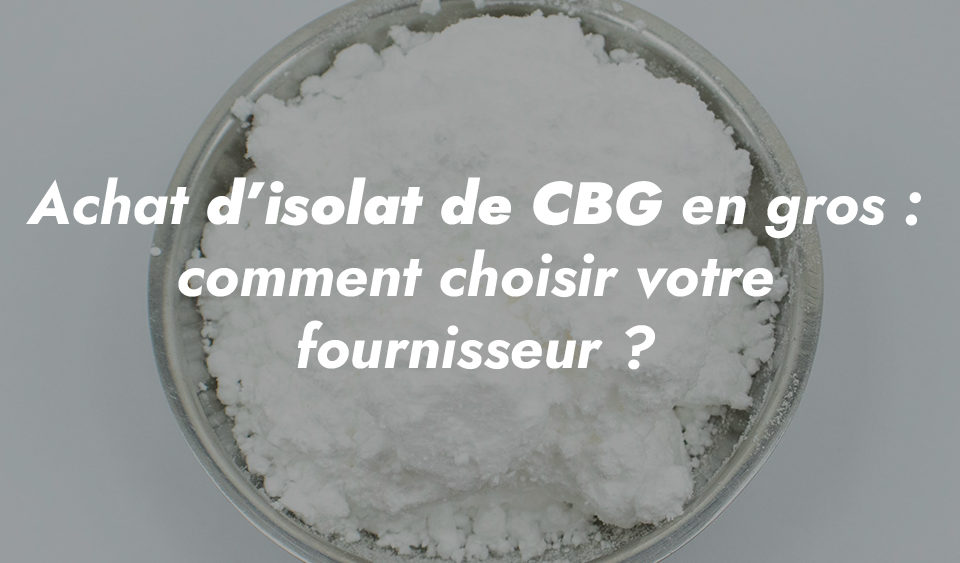
THCa and THC: what's the difference?
March 3, 2021
Green Exchange seen on TF1!
March 15, 2021Cannabidiol, or CBD to those in the know, is one of more than a hundred cannabinoids known to date. As the main active substance in therapeutic cannabis, you know what it is and what its effects are. But do you know the story behind CBD?
The history of CBD: ancestral uses of cannabis
Although somewhat marginalized today, cannabis was one of the first plants domesticated by man.
Indeed, since Neolithic times and even prehistoric times, hemp has been valued for the medicinal properties of its resin, its strong fibers and its seeds, which are rich in proteins and vitamins.
The first manuscript concerning the therapeutic use of cannabis dates back to 2800 BC. It is the famous Chinese medicinal manifesto, Shennong bencao jing, which classifies cannabis as a life-prolonging substance.
Egyptologist Lise Manniche also reports on the ancestral use of marijuana as a medicinal plant. The plant is described in several Egyptian texts, including one dating from the 18th century BC. In ancient Greece, hemp was also used for its therapeutic properties, notably to relieve pain.
The medicinal use of cannabis spans the ages, extending into the Middle Ages, the Renaissance and the 19th century. In the 1830s, Sir William Brooke O'Shaughnessy studied the beneficial effects of hemp on patients suffering from rheumatism, cholera and tetanus.
But from the 1920s onwards, the therapeutic use of cannabis took a back seat. On the other hand, its psychotropic effect took center stage... And scientific research, lacking legitimacy, came to a virtual standstill...
Raphael Mechoulam, father of CBD
In 1940, American chemist Roger Adam isolated the very first cannabinoid. Strangely enough, it wasn't THC, but CBD. It was not until Cahn's work that THC was isolated.
This is a decisive discovery, as cannabinoids (and more specifically CBD) appear to be the molecules responsible for the therapeutic effects reported by hundreds of medicinal treatises worldwide.
However, it would be some twenty years before Dr. Raphael Mechoulam formally identified the chemical structure of CBD (C21H30O2), then that of THC (C21H30O2).
In an interview, the scientist explains: "By the early 60s, it had already been over 150 years since morphine had been isolated from opium, while cocaine had been studied a century earlier. But there was still nothing being done about cannabis!"
Thanks to Dr. Mechoulam's discovery, we finally understand that the effects of cannabis are induced by two very different cannabinoids. THC, with its psychotropic properties. And CBD, with possible therapeutic properties.
The association between cannabis and hippie culture is losing some of its hold. And scientists gradually gained the blessing of the political sphere. In New Mexico, for example, the 1978 law was passed: for the first time, the medicinal value of cannabis was legally recognized.
The scientific world is (finally) taking an interest in CBD
Dr Raphael Mechoulam continues his research, demonstrating that CBD is capable of reducing and even blocking convulsions caused by epileptic seizures in primates. He also highlights its anxiolytic properties, making CBD a possible natural treatment for anxiety disorders.
With these two promising discoveries, CBD is attracting the attention of pharmaceutical companies, and scientific experiments are gathering pace.
In 1973, a team of Brazilian researchers confirmed Dr. Raphael Mechoulam's discovery that CBD was effective against epileptic seizures in humans. The following year, its anti-psychotic effect was formally demonstrated.
In 1988, the discovery of the endocannabinoid system (ECS ) and the CB1 and CB2 receptors caught the attention of scientists, and with good reason: it would seem that the human body is biologically predisposed to assimilate the active substances in cannabis.
At the same time, we discover that our bodies synthesize cannabinoids naturally and autonomously. We differentiate between endocannabinoids, produced by the body, and phytocannabinoids, of plant origin.
In the years that followed, research into CBD continued. Its antioxidant and neuroprotective properties were highlighted. This opened up a whole new world of possibilities, notably for the treatment of neurodegenerative diseases such as Parkinson's and Alzheimer's.
The CBD industry and its prospects
In early December 2020, the United Nations Commission on Narcotic Drugs (CND) decided to remove cannabis from Schedule IV of the 1961 Single Convention on Narcotic Drugs. On this occasion, the WHO also clarified that CBD is not subject to international controls.
Currently, over 50 countries have legalized the use of therapeutic hemp, a type of cannabis that contains no THC (less than 0.2%). It therefore has no psychotropic effects.
The CBD industry has a bright future ahead of it. Its therapeutic effects are becoming more and more evident, and every day new players are helping to make this small molecule better known to consumers.
Consumers now have easy access to quality CBD products, both in stores and online. Finally, the circle may be about to be brought full circle : CBD is about to regain the place it deserves.





